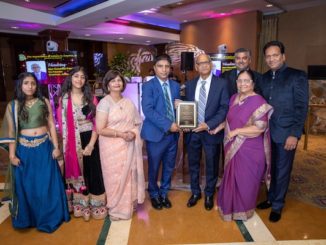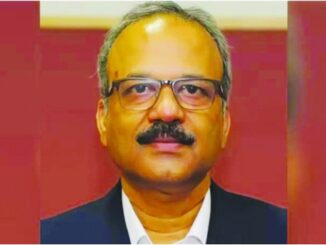
Shardiya Navratri 2023 will begin on October 15 and conclude on October 24. During these nine days, people worship the nine forms of Goddess Durga. The forms include Maa Shailputri, Maa Brahmacharini, Maa Chandraghanta, Maa Kushmanda, Maa Skandamata, Maa Katyayani, Maa Kaalratri, Maa Mahagauri, and Maa Siddhidatri.
Navratri the festival dedicated to Maa Durga, the embodiment of Shakti or cosmic energy is one of the pious festivals for the Hindus. Sharad Navratri observed in September/October is widely celebrated across India and abroad and witnesses huge festivities that touch everyone’s lives. Maa Durga has nine forms, and all are worshipped during Navratri by dedicating each day to one ‘avatar’ or incarnation. Each goddess is representative of a particular virtue and is believed to bestow worldly and spiritual fulfilment.
Performing rituals of Navratri is the most significant way of experiencing the essence of this Hindu festival. In the auspicious and awe-inspiring occasion, divine love pervades through all devotees who emerge more courageous and wiser through the nine-day rigor. In the vein of all vedic traditions, Navratri customs help to inculcate spiritual habits. Hence, prayers, chants, ‘bhajans’ and reading of important religious texts make up a significant portion of this festival. Devotees pay obeisance to this feminine divine energy that is believed to maintain the balance of the universe.
Navratri is one of the most anticipated festivals in India with social and spiritual connotations. Navratri Hindu festival is spread out over nine consecutive days in the Chaitra and Ashwin months to consecrate the divine aspects of Ma Shakti as Goddess Durga, Goddess Lakshmi and Goddess Saraswati. The festival is associated with their symbolic connotation as epitome of courage, wealth and skill respectively.
Broadly, on the first three days, devotees venerate Goddess Durga as she represents power in its divine form that removes negativity and proclivity towards immoral behavior. She is, invoked as Kumari, Parvati and Kali which are aspects of Ma Durga and represent her adolescence-to-maturity stage. During the next three days, Goddess Lakshmi blessings for material and spiritual prosperity are sought with puja and powerful mantra chantings. Over the next three days, Goddess Saraswati is invoked to seek blessings for erudition and skills in the arts. The devotee puts books and musical instruments near the deity to acquire true knowledge and wisdom to see him/her through this life and beyond. The ninth day of ‘Mahanavami’ , the concluding day of Navratri puja, is considered an auspicious day for conducting pujas such as ‘Aparajita’ puja and ‘Kanya Puja’. The tenth day celebrates the momentous events associated with Lord Rama as well as Ma Durga, who killed the demon ‘Mahisasura’.
Customs & Rituals of Navratri
Customs of Navratri which stand out prominently in terms of strict observance include the following:
On the very first day, barley or ‘jowar’ seeds are sown in a decorated clay pot and by the tenth day, the tender shoots are distributed among the devotees. A photograph or an idol of the eight-armed Goddess seated on a lion, along with the ‘yantra’ is installed.
‘Kalash Sthapna’ is done which involves installing a water pot or ‘kalash’, sprinkled with holy water and filled with mango leaves and coconut.
The morning ‘puja’ is performed after a bath, and the day-long fast is broken after doing the evening puja.
During the puja, ‘shankh’ is blown, fresh flowers, ‘doob’ or sacred grass, ‘paan’ and fruits are offered to the deity, chapters from the sacred ‘Durga Saptshati’ and ‘Chandipath’ are recited, followed by ‘arti’ and prasad distribution.
A very significant ritual is performing ‘Kanya Puja’ on ‘Ashtami’ and ‘Navami’, which involves worshipping nine young girls, in pre-puberty stage, representing the nine forms of goddess Durga. Each girl is treated to a meal comprising puri, sweet bread, halwa, a sweet dish, made of semolina and Bengal gram curry. After washing their feet, the devotees break their fast.
Ayudha or Astra Puja is held on the eighth/ninth day. Tools, vehicles and equipments are worshipped on this day.
Among some communities, it is also considered an auspicious time to initiate learning for children by invoking Goddess Saraswati. Hence, Lalita-puja and Saraswati-puja is done ritualistically to start formal education of children.
A Garba performance precedes ‘aarti’ conducted in honor of Maa Durga.
Fasting or ‘vrat’ from sunrise till sunset is undertaken for night days.
In the Navratri Hindu festival, the devotee should observe abstinence and austerity.
On the eight day, a ‘yagna’ is performed with offerings of ghee and til for mental and spiritual cleansing.
Lemon or bhasma or ash is used for cleaning substances for ‘abhishek’.
In Gujarat, a garbh-deep or a lamp is lit within an earthen pot with several perforations representing the unison of body and soul.
Navratri is a celebration of the nine incarnations of Maa Durga. Each day is devoted to a specific avatar. Read on to know which form of Maa Durga is worshipped on which of the nine days.
Day 1: Goddess Shailputri
Shailputri literally means ‘daughter of mountains’. This avatar of Maa Durga was born as the daughter of Mountain King Himalaya. With a white bull as her mount, she sits with a trishul in one hand and a lotus in the other. She represents the principal form of Durga in the childhood stage of Parvati.
Day 2: Goddess Brahmacharini
The name Brahmacharini means ‘mother of devotion and penance’. In this avatar, she holds a Rudraksha mala in one hand and a kamandalu in the other. She represents the ascetic phase of Durga.
Day 3: Goddess Chandraghanta
Seated upon a fierce tiger, this avatar of Maa Durga has 10 hands, eight of which are armed with trishul, gada, sword, kamandal, a lotus flower, arrow, dhanush and japa mala.Her fifth left hand is in Varada Mudra, and her fifth right hand makes the Abhaya Mudra. This is the ‘Shakti’ form of Maa Durga.
Day 4: Goddess Kushmanda
This avatar is a representation of Durga as ‘Mahashakti’. The name Kushmanda means ‘creator of the universe. In this avatar, she is seated on a lion, having eight arms. Each of her arms hold a kamandal, dhanush, bada, kamal, an amrit-kalash, japa mala, gada, and chakra respectively.
Day 5: Goddess Skandmata
Representing Durga in her motherhood phase, Skandmata means Goddess of motherhood and children. Mounted upon the back of a lion, in this avatar, she has four arms, two of them holding lotuses and with her son, six-faced Kartikey (thus the ‘Skand’) in one hand and the other hand in the fear-dispelling Abhayamudra position blessing her devotees.
Day 6: Goddess Katyayani
In this avatar, the four-armed deity is seated upon a fearsome lion with a sword, shield, lotus, and trident in each hand. The goddess of power represents Goddess Durga as a warrior.
Day 7: Goddess Kaalratri
Kaalratri is the goddess of auspiciousness and courage as a manifestation of Durga in her form of destruction. With a donkey as her ride, she has got three bloodshot eyes and unkempt hair. She wears a garland of skulls around her neck and holds a trident, scimitar, vajra, and a bowl in her four hands. She is often referred to as ‘Kali’.
Day 8: Goddess Mahagauri
On the eighth day of Navratri or Ashtami, Goddess Mahagauri is celebrated as the goddess of beauty and women. With a white bull as her vehicle, she represents Durga in her form of recovery. The four-armed avatar holds a trident, a damru, and a pink lotus in three hands and her fourth hand is shown blessing her worshippers.
Day 9: Goddess Siddhidhatri
The final day of Navratri is dedicated to the goddess of siddhis. This form of Durga implies perfection, reaching the supreme form as Mahashakti. Sitting on a lotus, she holds in her four arms, a discus, conch shell, pink lotus, and a mace.
Foods To Eat And Special Fasting Foods
Navratri celebrations vary from state to state. A number of Hindu families fast for varying periods during Navratri. During the fasting periods, only certain foods are allowed and a number of foods and spices are banned from consumption. Typically, fasting devotees give up consumption of grains for most part of the day, partaking in a specially prepared fasting meal only once a day. The rest of the day, they eat only fruits and special vrat snacks, prepared from sendha namak or rock salt. Only some food grains, vegetables and spices are allowed during the Navratri fasting period. These include grains like buckwheat and water chestnut flour and certain tubers like potato and sweet potato. Desserts made from sabudana or sago and fox nuts or makhanas are common preparations during Navratri fasts.
Other commonly prepared fasting dishes include sabudana vada or sabudana tikki, kuttu or buckwheat flour pooris, potato curry, sweet potato halwa, etc. While the consumption of sugar is allowed, consumption of table salt is banned during Navratris.
Significance
The Triumph of Good over Evil:
Navratri, meaning ‘nine nights,’ is a time when devotees worship different forms of the goddess Durga, the divine warrior who symbolizes the victory of good over evil. Throughout the nine days, devotees engage in prayers, fasting, and rituals, seeking blessings and protection from the goddess. On the tenth day, known as Dussehra or Vijayadashami, the festival concludes with the immersion of Durga idols, representing the triumph of good over evil.
Devotion and Spiritual Purification:
The Sharad Navratri Parana holds immense spiritual importance for devotees. During this time, they engage in rigorous fasting and perform various religious rituals to cleanse their mind, body, and soul. By abstaining from certain foods, indulgences, and participating in prayers, individuals aim to purify themselves and strengthen their devotion to the goddess Durga. The Parana marks the culmination of these efforts, bringing a sense of fulfillment and spiritual satisfaction.
Renewal of Faith and Commitment:
Navratri serves as a time for devotees to reassess their faith and reaffirm their commitment to righteousness and moral values. The celebration of Navratri Parana provides an opportunity to reflect on one’s spiritual growth during the nine-day period and set new goals for personal development. It encourages individuals to continue walking on the path of righteousness, armed with the blessings and guidance of the goddess Durga.
Cultural Unity and Festive Joy:
Navratri is not only a religious festival but also a celebration of culture and unity. It brings people together, strengthening family and community bonds. During Sharad Navratri Parana, devotees participate in grand processions, singing and dancing to traditional folk music. The immersion of Durga idols in the river or other water bodies during Dussehra inspires a feeling of collective joy and excitement. This shared experience fosters harmony, inclusivity, and a sense of belonging among communities.
Sharad Navratri Parana marks the end of the revered Navratri festival, signifying the victory of good over evil and the renewal of faith. This celebration holds deep spiritual, cultural, and emotional significance for devotees across the globe. It serves as a reminder of the importance of devotion, purification, and personal growth on the journey towards spiritual enlightenment. Moreover, Navratri Parana reinforces our commitment to nurturing unity, love, and harmony within our communities. Let us embrace this festive occasion with reverence and joy, seeking divine blessings and embracing the triumph of good in all aspects of our lives.





Be the first to comment